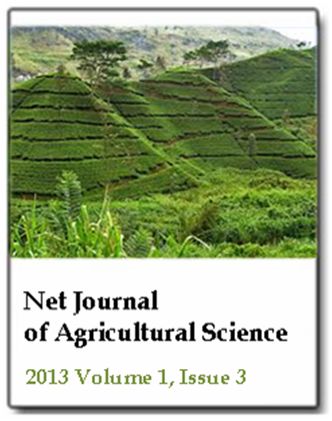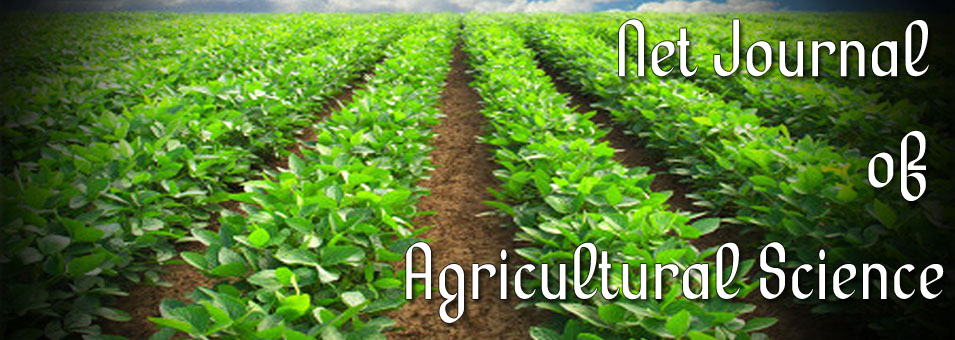Growth and yield of maize (Zea mays L.) in response to herbicide application in the coastal savannah ecozone of Ghana
E. Larbi, J. Ofosu-Anim, J. C. Norman, S. Anim-Okyere and F. DansoNet Journal of Agricultural Science
Published: September 4 2013
Volume 1, Issue 3
Pages 81-86
Abstract
Field studies were conducted at the University of Ghana, Legon farm from June to September 2005 to investigate the growth and yield of maize (Zea mays) in response to herbicide application. Four groups of herbicides; 2,4-D (Bextra and Calliherbe), glyphosate (Kalach 360SL, Fire and Weed Out), Atrazine (Callitraz 500SC and Trazine 500SC) and Paraquat (Gramoxone Super and Benaxone) were used. Each of the named herbicides constituted a treatment, with hand weeding as the control. In all, there were ten treatments and four replicates arranged in a randomized complete block design. Paraquat and gyphosate treatments were applied before sowing; Atrazine and 2,4-D were applied two days after sowing. The compound fertilizer 15-15-15 (N-P-K) at the rate of 250 kg/ha was applied as side dressing 2 WAP. Top dressing with sulphate of ammonia at rate of 125 kg/ha was applied 6 WAP. Analysis of variance (ANOVA) for the data was carried out using (Genstat 5 statistical package, 1997). Significant differences between means were estimated by the Least Significant Difference at 5% level of significance. Results revealed that dry matter accumulation, leaf area were similar in all treatments across the sample period. Glyphosate, Paraquat and Atrazine treatment had dry matter accumulation similar to the control. 2,4-D treatment however had higher dry matter at 2 WAP. Although there was no difference in the number of kernels per plant among the various treatments 2,4-D treatment plots produced 33 to 41% less as compared to the control in yield per hectare.
Keywords: Glyphosate, paraquat, herbicides, maize yield, growth response.
Full Text PDF
